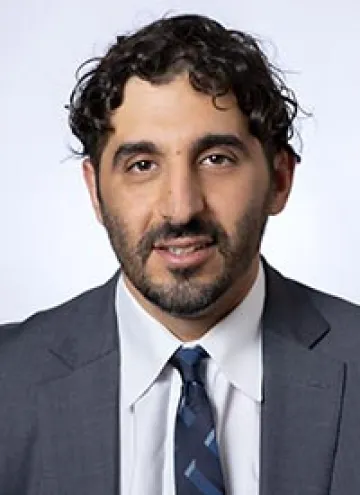Trauma Experts Aim to Reduce Deaths by Providing Blood-Clotting Agent
TUCSON, Ariz. Severely injured trauma patients who received a blood-clotting drug before arriving at the hospital had a better chance of surviving than those who didnt, according to new research from the University of Arizona Health Sciences in partnership with the University of Pittsburgh School of Medicine.

The multi-center trial, which took place over four years in Pennsylvania, Texas, Utah and Arizona, was designed to determine whether giving tranexamic acid, a blood-clotting agent, to trauma patients before they arrived at the hospital improved patients chance of survival.
In certain subgroups who got the drug very early within the first hour or who had severe shock with a blood pressure less than 70 when the paramedics arrived, there was an improvement in survival said lead author, Francis X. Guyette, MD, associate professor of emergency medicine at Pitt and University of Pittsburgh Medical Center (UPMC) emergency physician.
The results were reported at the American College of Surgeons Clinical Congress 2020 and published in JAMA Surgery.
Tranexamic acid is commonly used in cardiac surgery to help stop bleeding, but previous studies have suggested that the drug may pose risks including blood clots and strokes to patients suffering from severe injuries. None of the participants displayed increased risk of these side effects compared to those who didnt receive the drug.
The researchers found that while tranexamic acid is safe, it did not significantly reduce 30-day mortality in the majority of patients at risk of hemorrhage following their injuries, though a smaller subset of patients with severe shock did show improvement.
This study has revolutionized the way we treat our patients before they get to the hospital said Bellal Joseph, MD, FACS, the Martin Gluck Professor of Surgery in the College of Medicine Tucson's Department of Surgery and chief of the Division of Trauma, Acute Care, Burn and Emergency Surgery. Trauma care is moving the prehospital setting.Im proud that our community, Banner University Medical Center Tucson and the University of Arizona were able to contribute to these results
The 903 participants in the study were enrolled from emergency calls where patients were at risk of bleeding from trauma. A total of 49 trauma patients who presented to Banner University Medical Center Tucson via air helicopter transport participated in this study.
When paramedics arrive at a scene, it's hard to gauge the full extent of a patient's injuries, making it difficult to determine the level of trauma theyve experienced.
The prehospital environment is very unknown said senior author Jason Sperry, MD, professor of surgery at Pitt and UPMC trauma surgeon. All you have are some vital signs, and you know they have been injured. Tranexamic acid was given to just about everybody if they had either a high heart rate or low blood pressure
Since tranexamic acid is delivered through an IV, it's easy to stock in emergency vehicles. It's also affordable, so paramedics are less likely to ration it for the patients who they suspect have the worst injuries.
Drs. Joseph, Guyette and Sperry hope that their findings will be used to modify guidelines for paramedics.
Additional co-authors on this research are: Joshua B. Brown, MD, MSc, Mazen S. Zenati, MD, PhD, Barbara J. Early-Young, BSN, and Peter W. Adams, BS, all of Pitt; Brian J. Eastridge, MD, of the University of Texas Health San Antonio; Raminder Nirula, MD, MPH, of the University of Utah; Gary A. Vercruysse, MD, of the University of Michigan; and Terence O'Keeffe, MD, of the Medical College of Georgia at Augusta University.
This research was funded by U.S. Army Medical Research and Materiel Command (W81XWH 13-2-0080).
# # #
About the University of Arizona College of Medicine Tucson
The University of Arizona College of Medicine Tucson is shaping the future of medicine through state-of-the-art medical education programs, groundbreaking research and advancements in patient care in Arizona and beyond. Founded in 1967, the college boasts more than 50 years of innovation, ranking among the top medical schools in the nation for research and primary care. Through the university's partnership with Banner Health, one of the largest nonprofit health care systems in the country, the college is leading the way in academic medicine. For more information, visit medicine.arizona.edu (Follow us: Facebook | Twitter | Instagram | LinkedIn).
About the University of Arizona Health Sciences
The University of Arizona Health Sciences is the statewide leader in biomedical research and health professions training. UArizona Health Sciences includes the Colleges of Medicine (Tucson and Phoenix), Nursing, Pharmacy, and the Mel and Enid Zuckerman College of Public Health, with main campus locations in Tucson and the Phoenix Biomedical Campus in downtown Phoenix. From these vantage points, Health Sciences reaches across the state of Arizona, the greater Southwest and around the world to provide next-generation education, research and outreach. A major economic engine, Health Sciences employs nearly 5,000 people, has approximately 4,000 students and 900 faculty members, and garners $200 million in research grants and contracts annually. For more information: uahs.arizona.edu (Follow us: Facebook | Twitter | YouTube | LinkedIn | Instagram).

